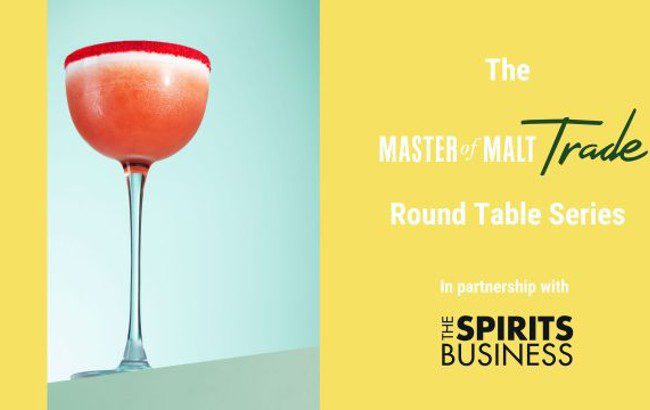Master of Malt Trade Round Table: key takeaways
Don’t let market trends take your focus away from your core proposition was a key message from the second Master of Malt Trade Round Table Series discussion.

Hosted by Master of Malt Trade in partnership with The Spirits Business, the hour-and-a-half webinar – I’ve got the listing, what’s next? – covered three core subjects: diagnostics (research), strategy, and tactics.
Chaired by compare Adrian Lugg, head of marketing, Atom Brands and Master of Malt Trade, the panel speakers were: Giovana Petry, head of brand and subscriptions, Master of Malt; Mark Harvey, sales and marketing managing director, The Oxford Artisan Distillery; Olivia Prince, e-commerce partner manager, Maverick Drinks; Josh McCartney, global trade marketing, Wolfie’s Whisky; Andy Lewis, managing director, We Are Magnetic; and Melita Kiely, editor of The Spirits Business.
During the first part of the talk, looking at diagnostics, the speakers highlighted the importance of not allowing market trends to detract focus too much from your core proposition. They recommended questioning what value trends would give your product or brand in 50 years’ time?
“The ‘build it and they will come’ approach rarely works, so it’s key to identify a customer need or market gap,” said Lewis. “Look at the category and how your product or brand will stand out – ask yourself if there is an opportunity for your concept to fill a ‘gap’?”
When it comes to strategy, the speakers noted while it is possible to create a digital-only direct-to-consumer (D2C) brand, a robust omnichannel strategy is important for scaling opportunities.
The on-trade remains important for brands to get products to lips, and to build awareness of new products.
Petry noted: “What we have seen successful brands do is to start with knowing a core customer base, a more segmented (smaller) audience, learning and developing the product based on their feedback resulting in gaining better traction and pushing to mass market.”
Commenting on the on-trade, McCartney added: “Identify the purpose of each channel for longer-term growth – on-trade can give space to tell stories through activation, that then helps win new points of distribution in the off-trade and grocery channels.
“D2C through the likes of Master of Malt (MoM) and other e-commerce platforms means that all customers have a trustworthy, recognisable RTM, but that’s very much one piece of the puzzle. MoM Trade serves a similar function UK-wide for the on-trade.”
Pricing: approach with caution
As the conversation moved to tactics, price became a key talking point – and something to approach with caution.
The speakers noted that it is ‘really difficult, if not impossible’ to go back once the price of a product has been reduced. Customers will remember what they paid for a product six months ago, the speakers said, to raising prices will impact sales.
Instead, they recommended looking at options such as gifts with purchases. Furthermore, long-term price discounting from a brand can also ‘degrade the perceived value of a product’.
It is also important to consider the overall category dynamic, and where your brand sits in that space, advised Prince.
“If we look at a specific example of selling spirits on Amazon UK, let’s say you have a rum product,” Prince said. “The overall spirits category is estimated to be worth almost £8 million [US$10.1m] a month, with just over 11% of that coming through the rum subcategory.
“It would be really easy to look over at the whisky subcategory, which is about 40% of the spirits total, and think I’d love some of that £3m [US$3.8m] a month – but you have to consider the overall category dynamic.
“How would you stand out amongst the 200-plus brands selling whisky on Amazon? Where would you sit against the category ASP [average sales price]? How could you challenge the 20 brands that combined have over 62% share of the category, and how much would it cost you to compete?
“I’d focus on nailing your bread and butter, engaging with your followers and expanding when the time is right based on the needs of your customers. Hype is great, but don’t let it lead you blindly into any old market.”
The promotion of the listing is also imperative, and different platforms serve different purposes. Creating multi-platform content is a good way to reach different audiences. Consumers will absorb content differently on social media sites, compared with longer video content on YouTube, or long-form written pieces on websites or in magazines.
“Candid views and strong opinions, strong imagery and videos, a clear brand message and insight into what customers want, works best for click-through or engagement in the press,” Kiely said.
Related news
Top 10 marketing moves from June 2025
